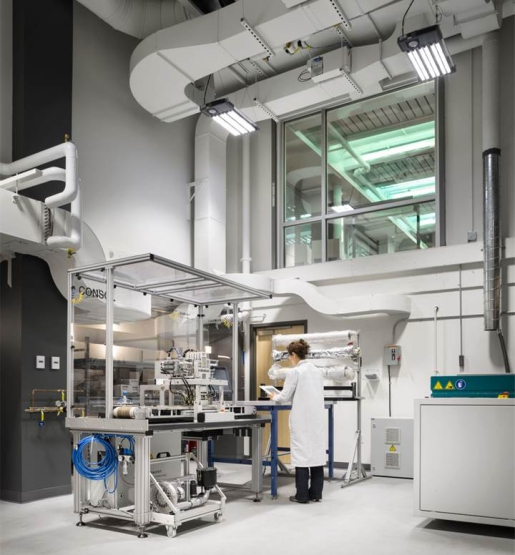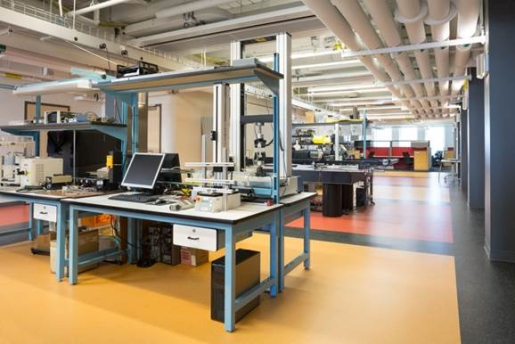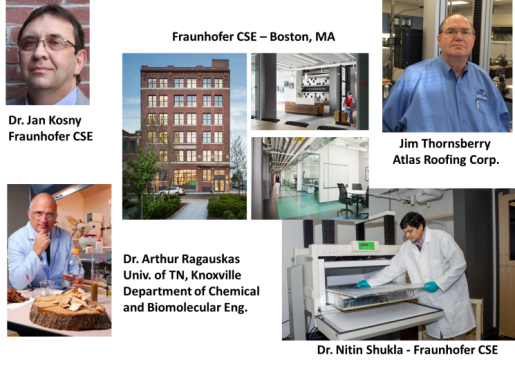Lead Performer: Fraunhofer Center for Sustainable Energy Systems – Boston, MA
Partners: University of Tennessee – Knoxville, TN; Atlas Roofing Corporation – Meridian, MS
Project Term: October 1, 2015 – September 30, 2016
Funding Opportunity: Building Energy Efficiency Frontiers and Incubator Technologies (BENEFIT) - 2014 (DE-FOA-0001027)
Project Objective
Despite its superior thermal resistivity and fire resistance than other common plastic foams such as EPS, XPS and PIC, phenolic foam is scarcely used in U.S. buildings due to its corrosion potential and poor mechanical characteristics that led to nationwide failures of metallic roofs during 1980s and '90s.
The project aims to develop a bio-based, high thermal resistivity, reduced acidity, mechanically stronger inexpensive phenolic foam derived from biomass lignocelluloses. Lignocellulose (composed of lignin and cellulose) is an abundant, inexpensive, and sustainable waste product from the pulp and paper industry. The concept behind using lignocellulosics is twofold:
- Lignin, a rich natural source of phenol resin, will be used to synthesize resole resin.
- Lightweight nanocellulose fibers will be added to mechanically reinforce the foam cellular matrix to reduce the brittleness and friability of the phenolic foam.
To maximize the stability of foams and minimize cost, this program will examine the replacement of phenol with lignin from cellulosic ethanol facilities because cellulose derived in such process is odorless unlike the one produced from Kraft pulp and paper industry.
Project Impact
Among the plastic foams, phenolic foam is the only insulation that can reach or even exceed R-8.0 per inch. It also satisfies the fire safety codes without the need for fire retardants. Installation of the phenolic foam wall sheathing involves similar low-labor and easy installation methods as required for commonly used plastic foam board products.
Contacts
DOE Technology Manager: Karma Sawyer
Lead Performer: Dr. Jan Kosny, Fraunhofer CSE



